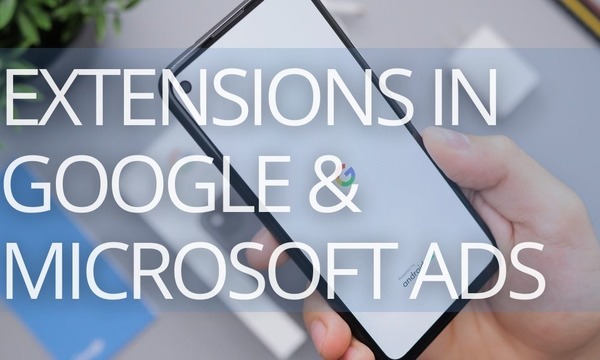COVID has taught customers many things, including how to shop online. Post-pandemic, we’ve also seen a massive increase in businesses moving to eCommerce. Where there is eCommerce, there are Google Ads. Today Google Ads is the most popular PPC advertising system in the world.
And while advertising with Google has many benefits, including its intelligent algorithms and flexible advertisement possibilities, the competition is tough. Everyone wants a piece of the pie that promises great sales.
The competition, however, creates a great experience for the users. They are spoiled with a vast choice of goods online and have the highest expectations of the merchants.
Many businesses are investing in paid search advertisements. However, it is becoming increasingly more challenging for them to stand out. In today’s marketing landscape, raising your bids and hoping for the best is not enough. If you want to reach more customers, drive traffic to your website or increase brand awareness, you need to invest money and time into research, landing pages, and analysis.
Quality score
Why do businesses choose Google Ads as their go-to advertising platform? Because Google Ads lets them target people searching for what they offer. Google Ads is a remarkably flexible platform, enabling businesses to tailor their campaigns to specific goals. And the best thing about Google Ads is that you do not need to keep increasing your bids to achieve those goals. In fact, bidding high does not guarantee top ranking, conversions, or even clicks.
To compete in Google Ads, you need to raise your Quality score. Quality score is an essential part of Google Ads. The higher the score, the more likely your ad is to succeed. What affects your quality score? Well, bidding high doesn’t. Click-through rate, ad relevance, and great landing pages do. Below are the strategies to follow if you want to stand out and get even more sales through Google Ads.
1. Increase your click-through rate
If you want to stand out, you need to be different. Or it would be better to say that your ads need to be different from your competitors’. Do what needs to be done. Add unique offers to your ads, and adjust the content depending on the season or day of the week.
Use the holidays to your advantage! Even if you are not selling Christmas-related products, sneak in a few seasons’ words, and your products will get discovered more often.
A great strategy that works to increase your click-through rate is to include as many numbers as possible. Customers prefer specifics, so give them those. And instead of ‘Final sale’ advertise a’ 70% sale’ and so on. This way your ad is certain to get more attention.
2. Remember that your ads are only as good as your website
A significant piece of the Quality Score puzzle is the landing page experience. The page your customers go to from the ad is where the conversion happens. Therefore, it is crucial where you send your customers and what they see there. Do not direct your customers to your homepage from the ad; it feels generic and not very personal. If the customer is interested, they will explore your website themselves. But they want to be redirected somewhere connected to the ad they clicked on.
You need a unique landing page for each offer and each product. We hope we have made it clear. Now to the landing page itself. Could you keep it clean and clear? There should be a manageable amount of text or images; aim to balance them. Moreover, it is crucial that the page should load fast and be responsive for all devices.
And remember, a wrong landing page will make the user experience poor and prompt Google to show your products less.
How to Optimize your Ad Destination Page to Improve Performance
3. Know your customer
First, you need to know the demographic details of those who buy from you. It includes age, gender, education, ethnicity, and income. Second, you need to know additional, often referred to as psychographic details of your customers. These include values, attitudes, preferences, and beliefs.
Why is it so important? To succeed in google as, you must understand how your customers will search for your products. What keywords will they type into the search engine? What would they expect your landing page to look like? And so on. You must always think from the customer’s perspective and meet those expectations. Indeed, different people will be looking for a different tone of the website and photos, and so on. So knowing your customer and knowing who you sell to is crucial.
4. Keep an eye out for keywords that do not convert
The right keywords are at the heart of a successful Google Ads campaign. Therefore, it’s crucial to analyze your keyword list and pause or delete low-search volume keywords.
There is no point in keeping keywords that aren’t performing well. Moreover, those negatively impact your campaign performance. By keeping those low-performing keywords, you waste your time and budget.
Luckily, Google Ads allows users to see which keywords are successful and which do not generate traffic or conversions.
5. Track your success
It’s important to track your progress so that you can make any necessary changes along the way.
You are already familiar with Google Analytics, an excellent tool for monitoring your website traffic, conversions, and much more. However, several other ad management platforms are great for getting insights, managing ads, and doing the calculating job when it comes to bidding. By the way, PromoNavi is one of the best platforms for it. It allows you to track your campaigns and adjust and optimize them.
You need to practice embedding UTM codes if you want to see more than Google Analytics can offer. UTM codes are small snippets of text that you can add to any link to create more tracking information in Google Analytics. You can start with Google’s URL builder, a free tool that allows you to add UTM parameters to a link.
For example, if you want to track how well a specific campaign is doing, you can add that landing page URL and the campaign name that sends people there into Google’s URL builder. Google will start collecting the data for you, and you will be able to see whether customers convert from that specific advertisement-landing page combination.
6. Split-test different versions of your ads to find the most effective combination
One of the best ways to find an ad that works perfectly is to split-test different versions of it. You often have many ideas about the ad settings, and you want to implement all of them and target everyone. However, even if you end up with an ad that converts, it will be challenging to repeat the success as you would not know what exactly worked. Therefore, why not try creating a few versions of an ad next time and check different elements of it separately?
Split-testing, also known as A/B testing, is when users see two or more versions of the same ad. Each performance is examined after some time, and only the best version of the ad is left to run.
7. Experiment with different bidding strategies
Pay-per-click advertising is used on the Google search network. The business using PPC only pays for the ad each time it is clicked on. There are several different bidding strategies that you can use with Google Ads.
The most popular bidding strategy is CPC (cost-per-click), which allows you to set the maximum amount you are willing to pay for each click on your ad. However, you can also use other bidding strategies such as CPM (cost-per-impression) or CPA (cost-per-acquisition). It is ok to experiment. Remember that you can always pause or delete ill-performing ads. So if you’ve only tried the CPC bidding strategy, why not try CPM or CPA next time without increasing your budget?
Final Thoughts
In this article, we have given you tips to help you sell more on Google Ads and create better competition without topping up your budget.
Start with raising your Quality Score. Make sure you know who your customer is and that you create ads relevant to that person at that time of the year. Work on your landing pages. Get rid of badly-performing keywords and track the success of your ads, making all the necessary changes along the way.
And if it feels like you’ve tried everything, turn to split-testing or change your bidding strategy.


![30+ Best Alternatives to Google Analytics [Free & Paid]](https://blog.promonavigator.com/wp-content/uploads/2021/04/ga-alternatives-600-360-1.jpg)
